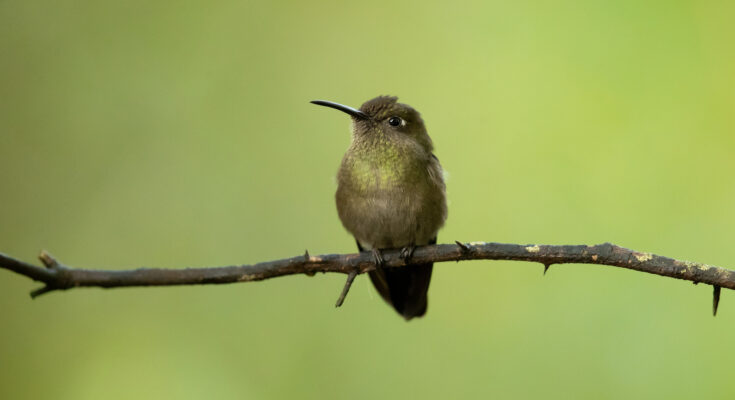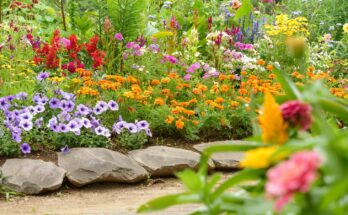The Kind Of Garden Hummingbirds Can’t Stay Away From
There are many ways to attract hummingbirds to your yard, including planting flowers they love. You can create the ideal conditions to attract these beautiful birds with a rain garden. When you hear the words “rain garden,” you may not immediately think of hummingbirds, but these useful gardens can be a hummingbird magnet when done right. A rain garden is a collection of plants in a small depression, designed to collect rainwater runoff and filter it back into the ground. Typically, native plants are used in these gardens, and by picking the right varieties, you can ensure hummingbirds will visit regularly.
The goal of rain gardens is to help clean potential pollutants out of the water and limit runoff. Natives are better at utilizing the nutrients available in the soil and don’t generally require fertilizing, making them great options to absorb nutrients before they make it back into your water supply. While not all native plants are favorites of hummingbirds, planting natives helps attract pollinators of all kinds — and there are plenty of options for hummingbirds that also work in your rain garden.
Using a combination of shrubs, wildflowers, and perennials, you can make a biodiverse space that will help solve a major environmental problem while attracting pollinators. Generally, the species you choose need to thrive in flood conditions. Depending on the size of your area, you could have more than two dozen plants in a rain garden, mixing in grasses and other plants to attract a wide variety of life.
Hummingbird magnets for your rain garden
If you want your rain garden to bring hummingbirds into your yard, all you have to do is pick a few plants to entice them. There are many options to choose from, but starting with three to five of the easiest will set you on the right path. Bee balm (Monarda didyma) is a vibrant flower that will attract hummingbirds hardy in USDA zones 4 to 9. It doesn’t mind wet soil, even growing along the banks of streams. Cardinal flower (Lobelia cardinalis) shares similar characteristics but is hardy down to zone 3, and its tall spikes of red, tubular flowers are irresistible to hummingbirds. Add great blue lobelia (Lobelia siphilitica) in zones 4 to 9 for all the same benefits but a different color.
Shrubs like the purple rhododendron (Rhododendron catawbiense) can do more than just lure in hummingbirds in zones 4 to 8. This native can tolerate almost full shade, prefers its soil not to dry out, and is evergreen, so it provides winter cover for other species of birds. It can be susceptible to root rot, however, so plant it at the edges or on the slope of your rain garden to ensure it doesn’t sit in standing water. Here’s what you should know before planting rhododendrons.
Swamp milkweed (Asclepias incarnata) is a favorite of many nectar-seeking critters, including hummingbirds and monarch butterflies. And, as the name implies, it doesn’t mind swampy conditions. It’s a great choice for the wettest part of your rain garden if you live in zones 3 to 9.



